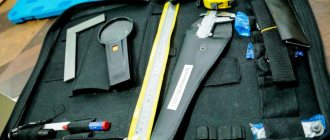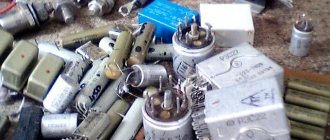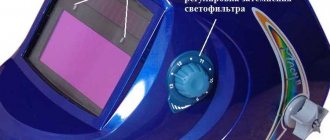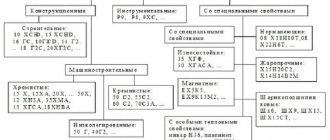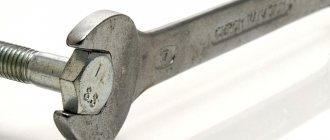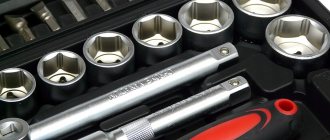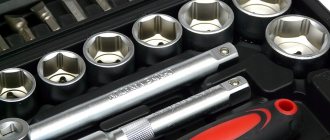Welding allows you to obtain permanent connections that are exceptionally strong. This indicator at the seam must be no lower than the base material, which is achieved by strict technology requirements and the addition of alloying substances. In addition, this process is characterized by connection speed, complexity of the acceptable form, and the ability to control and vary basic parameters. MIG/MAG welding is developing most dynamically in industrial applications, but other types are also being improved. The choice of a specific approach is determined by a number of parameters:
- Material of the parts to be connected.
- Production conditions. MIG, MMA and TIG require different organization and production preparation. The set of necessary equipment can vary from a simple power source to a set that includes a feed mechanism with precise adjustment and a compressed gas cylinder.
- Quality requirements. MIG, MAG, MMA and TIG welding should not always be considered interchangeable - they have different capabilities, including in the formation of the weld.
- Personnel qualifications. The most accessible in this are MAG and MMA. However, RDS is noticeably more difficult with increased requirements and small dimensions: leg, width, height, etc.
- Expected performance. The semi-automatic and automatic process turns out to be much faster than the manual one. Depending on this, suitable types are considered and the optimal one is selected.
MMA
mma technology diagram
In our country, the definition of manual arc welding (and the abbreviation RDS) is common. It is cheaper and easier to organize production and less demanding on equipment.
The connection of two elements in MMA occurs using an electrode - a metal rod coated with a coating containing substances that help maintain the arc, protect the welding zone, and form a seam with the desired properties. When voltage is applied, a stable short circuit is formed between the rod and the workpiece, leading to their mutual melting.
The difficulty may come from requiring welder qualifications. To obtain a neat and reliable joint, skill and long experience are required.
In MMA, special attention is paid to the condition of the electrodes, which should not be wet or crumbling. Do not neglect pre-drying and checking.
Exclusivity of the EWM tigSpeed drive 45 feeder
Having considered the general requirements for equipment for high-speed welding of aluminum, I would like to dwell a little on the expanded capabilities of the EWM tigSpeed drive 45 feeder. In addition to the above-described property of feeding the additive with oscillatory movements that imitate the welder’s hand, welding with hot or cold wire is possible here.
TIG welding with cold wire gives high speed, and the equipment is cheaper. This is beneficial for the quick assembly of leaking structures. TIG hot wire welding involves additional, resistive heating of the additive from a separate current source. Optimal heat balance increases the melting power by 60% and allows deeper penetration of the material, while maintaining a high process speed and a small weld width. This will be useful for enterprises that produce critical products (collectors, chemical containers, etc.), which undergo mandatory testing with a flaw detector.
Other advantages of the EWM feeder include:
- 4 rollers for rolling without slipping;
- the feed speed is 2 times higher than similar manual manipulations;
- Suitable for any EWM device manufactured after 2003;
- Compatible with water cooling for extended runtime;
- helps reduce harmful flue gases;
- Provides a perfectly smooth seam surface without spattering.
MIG/MAG
Mig/mag technology diagram
The question of what MIG/MAG welding is should not be misleading, despite the unusual designation.
The English abbreviation MIG/MAG (MIG/MAG) hides the well-known semi-automatic welding with electrode wire in a shielding gas environment.
Instead of a rod, a thin wire acts as an electrode, which is semi-automatically fed into the zone where the weld is formed. This compensates for the melting process and simplifies the performer’s task.
Small diameter wire (from 0.8 to 3.0 mm) allows you to obtain compact connection sizes of a few millimeters.
Fundamentally, MIG differs from MAG in the type of protective gas, which is necessary for isolation from the environment with its high oxygen content in the air. Oxidative processes negatively affect the structure through the formation of intercrystalline rust. MIG welding involves the use of inert gas, which itself does not enter into any chemical reactions, but due to its relatively large weight, tends downward, displacing air. A local microclimate is formed, which shows good results.
MAG welding involves interaction between the natural and created environments, accompanied by the binding of oxygen.
Applications and Benefits
Such equipment can be used in the same way as welding aluminum TIG or MIG separately. These are auto repair shops, mechanical engineering, ship repair, food and chemical industries (tanks, collectors, filters, highways, etc.). But thanks to the automatic feed of filler wire, welding processes will be completed faster. Since the arc burns between the tungsten electrode, it does not “walk” and is easier for the welder to control. The specialist has a free second hand with which to support the workpieces. There is no need to regularly unwind the wire from the spool and twist it into a more compact skein. All this increases the productivity of your enterprise.
For example, in production there will be no need to hire an additional group of welders and buy equipment for them in order to increase the volume of output. This can be done by the same workforce, provided they use a combination of EWM Tetrix AC/DC + TigSpeed devices and a specially configured burner.
TIG
Tig technology diagram
The decoding of this abbreviation leads to welding with a non-consumable electrode in an environment of inert gases. The main welding material used is thin, sharpened tungsten rods that are strong enough not to melt at operating temperatures. Wire is used as an additive, but its presence is not a prerequisite.
The argon-based protective environment not only sets the correct casting processes, but also creates a melting zone that is local and deep.
TIG is demanding on the level of the welder and on the equipment. Due to its minimal heating, it is usually used to work with aluminum or thin-sheet stainless steel. The same applies to MIG welding.
Flux
Among the types of arc welding, in addition to MIG MMA TIG, it is also worth mentioning that it proceeds under a layer of flux. What flux is has many variations. All possible materials have in common such qualities as flowability, the ability to influence the formation of a seam at all stages of remelting (including under unfavorable external conditions), and the ability to form a monolithic crust after cooling. The use of flux shows very good results, but complicates the process itself and implies additional costs. MIG, TIG and MAG are more economical and easier to implement.
Interesting “symbiosis” of equipment
If it were possible to weld aluminum parts as accurately as TIG and as quickly as MIG, the quantity produced would increase without sacrificing quality, which would help increase profits. Is there a technological solution for this?
Yes, I have! This is a bundle of equipment that includes: EWM Tetrix 351 AC/DC inverter + EWM tigSpeed drive 45 coldwire feed mechanism + special burner. Thanks to this set, TIG welding is carried out using alternating current, but instead of manually supplying the additive, an automatic one is used, on top of a nozzle with a tungsten electrode. This ensures process continuity, high execution speed and better quality.
What you need for TIG welding
TIG technology has also become widespread due to the fact that the generated arc generates high temperatures. Thanks to this, an experienced welder will not have a problem joining carbon steel workpieces. It is important to emphasize that this will ensure a high quality weld. In addition to steel, you can work with a large number of other metals: cast iron, titanium, aluminum and others. The seams obtained when welding stainless steel are of high quality. They don't even need subsequent cleaning.
To get started you will need:
- welding machine;
- gearbox;
- inert gas;
- filler wire.
Those who plan to engage in professional welding work need a machine with several TIG modes. You need to inquire about the type of burner. There are two of them: for welding thin sheets of metal and for all other types of work.
Cooking technology and TIG parameters
To connect metal parts using the argon arc method, perform the following steps:
- Clean the edges of the workpieces from dirt and degrease. Even if the parts look clean, you should not skip this step.
- Set the current strength. The quality of the welded joint depends on this parameter. There are special tables that help you choose the right current strength.
- Set the polarity. When working with direct current, choose the direct option. Reverse polarity is used when welding with alternating electricity.
- Sharpen and polish the end of the electrode. When connecting thin metal products, special rods are chosen. They are brought to the point of spiciness. When connecting thick elements, the sharpening angle is changed.
- To initiate an electric arc, a rod is passed along a metal surface. You can activate the TIG Lift option to speed up this process. Sometimes the inverter is switched to non-contact ignition mode. The latter method is available to users of expensive equipment, for whom it is preferable.
Purpose of technology
Since TIG welding allows you to join workpieces not only from steel and copper, but also from other metals, it is used in the following industries:
- automotive industry, production of industrial equipment components;
- shipbuilding and aircraft manufacturing;
- space industry;
- manufacturing of medical equipment;
- production of electrical tools.
Crucible welding is often used in domestic conditions.
Using a device with tungsten electrodes, you can weld car body parts, heating radiators, and metal water pipes.
Features of manual welding
The TIG welding process uses several elements, each of which has its own purpose.
The specifics of the work depend on this:
- The metal melts under the influence of an electric arc. It occurs between the electrodes when the voltage increases. One of the elements is the workpiece to be welded, the other is a special rod.
- The melting point of the tungsten element is 4000 °C. This value is higher than that of other metals. Therefore, any types of steel are welded with such rods.
- To obtain a uniform connection, the electrodes are periodically sharpened. The rod is fixed in the burner, the free end is protected with a cap that prevents short circuiting.
- The burner structure provides for a circular gas supply. Since argon is used to protect the weld pool, the method received the appropriate name. The inert gas displaces oxygen, preventing it from penetrating into the treated area. This prevents cracking of the welded joint during the cooling phase.
- Each metal has its own mode of operation of the device. The amount of gas released and the voltage value depend on the nature of the unit’s operation.
- When the edges are precisely processed, they melt and subsequently crystallize. If there is a distance between the parts that cannot be eliminated using this method, filler material is used. It is fed into the weld pool.
- TIG welding can be used to join aluminum workpieces. The shielding gas prevents metal oxidation and the edges melt evenly.
We recommend reading: How to weld metals in a gas-protective environment


